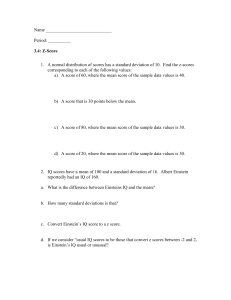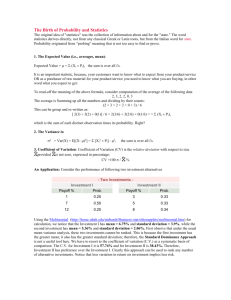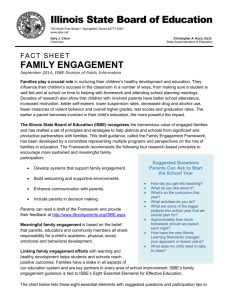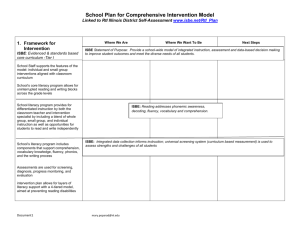Special Education Deviation Requests from State Class Size
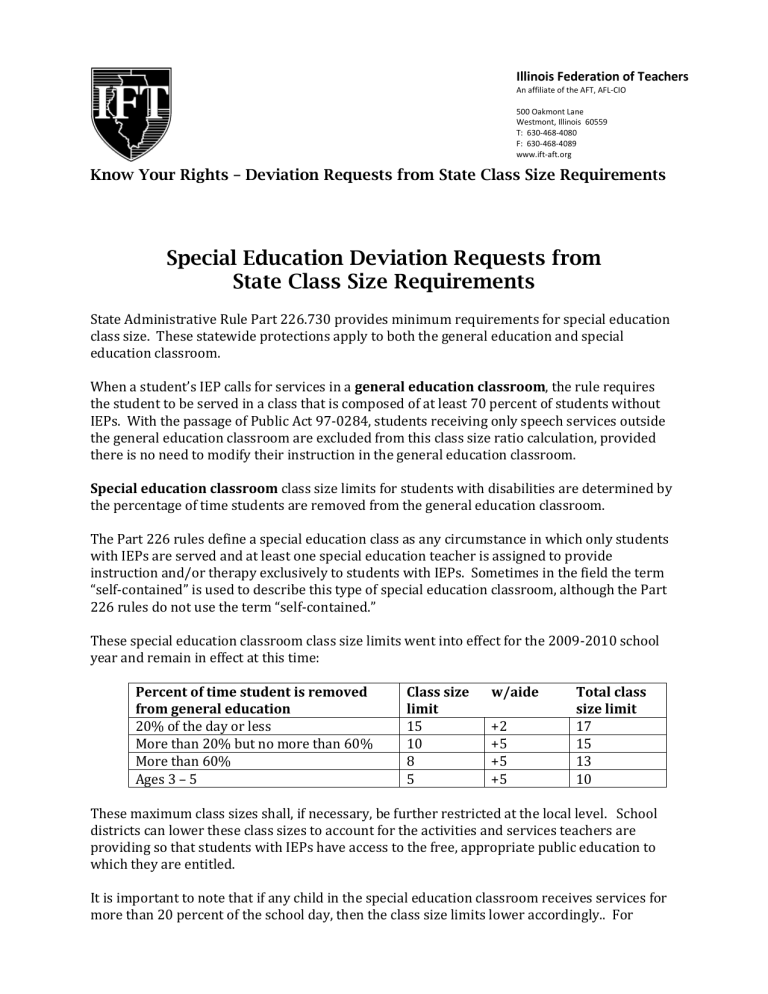
Illinois Federation of Teachers
An affiliate of the AFT, AFL-CIO
500 Oakmont Lane
Westmont, Illinois 60559
T: 630-468-4080
F: 630-468-4089 www.ift-aft.org
Know Your Rights – Deviation Requests from State Class Size Requirements
Special Education Deviation Requests from
State Class Size Requirements
State Administrative Rule Part 226.730 provides minimum requirements for special education class size. These statewide protections apply to both the general education and special education classroom.
When a student’s IEP calls for services in a general education classroom, the rule requires the student to be served in a class that is composed of at least 70 percent of students without
IEPs. With the passage of Public Act 97-0284, students receiving only speech services outside the general education classroom are excluded from this class size ratio calculation, provided there is no need to modify their instruction in the general education classroom.
Special education classroom class size limits for students with disabilities are determined by the percentage of time students are removed from the general education classroom.
The Part 226 rules define a special education class as any circumstance in which only students with IEPs are served and at least one special education teacher is assigned to provide instruction and/or therapy exclusively to students with IEPs. Sometimes in the field the term
“self-contained” is used to describe this type of special education classroom, although the Part
226 rules do not use the term “self-contained.”
These special education classroom class size limits went into effect for the 2009-2010 school year and remain in effect at this time:
Percent of time student is removed from general education
Class size limit w/aide Total class size limit
20% of the day or less
More than 20% but no more than 60%
More than 60%
Ages 3 – 5
15
10
8
5
+2
+5
+5
+5
17
15
13
10
These maximum class sizes shall, if necessary, be further restricted at the local level. School districts can lower these class sizes to account for the activities and services teachers are providing so that students with IEPs have access to the free, appropriate public education to which they are entitled.
It is important to note that if any child in the special education classroom receives services for more than 20 percent of the school day, then the class size limits lower accordingly.. For
example, if a special education classroom has just one student receiving services more than 60 percent of the school day, then the class size limit is 8 (or 13 with an aide).
District Requests to Deviate from State Class Size Provisions
Districts and special education cooperatives have the ability to request a deviation from these class size requirements on a case-by-case basis. The Illinois State Board of Education (ISBE) has developed forms and processes that must be followed to request a deviation. The deviation process provides flexibility to meet the needs of students with IEPs as part of their access to a free, appropriate public education.
A key part of the deviation approval process is input from the teacher(s) who are working with the affected students. It is important to note that for confidentiality purposes, the teacher(s) can directly submit the completed assessment of the situation to ISBE via email or US mail.
For further information, you can access the ISBE deviation forms here:
ISBE 73/30 Deviation Forms and Instructions at http://www.isbe.net/spec-ed/pdfs/34-38_deviation_instructions.pdf
ISBE Class Size/Age Range Deviation Forms and Instructions at http://www.isbe.net/spec-ed/pdfs/34-41_deviation_instructions.pdf
Updated August 20, 2014






